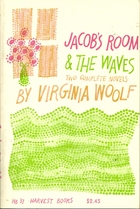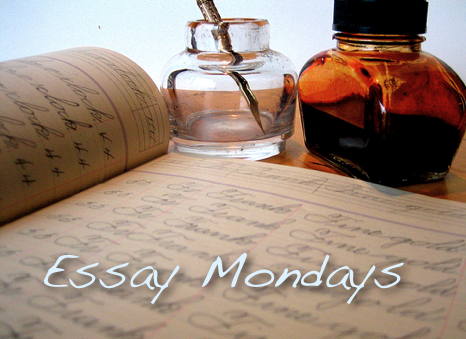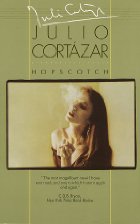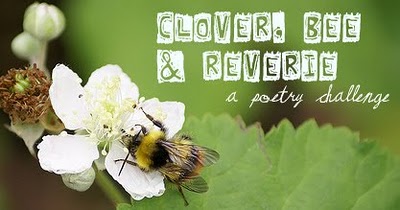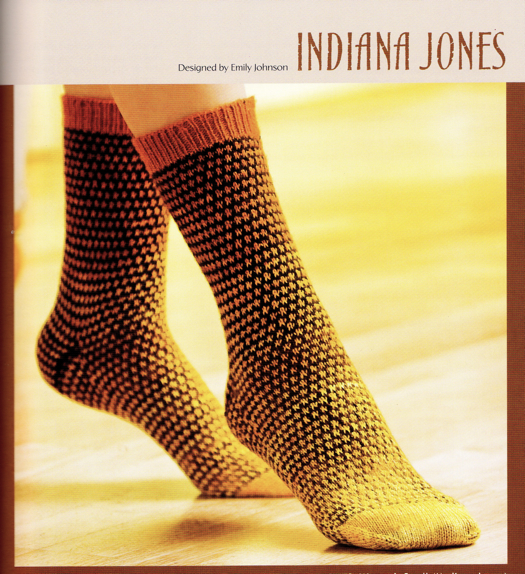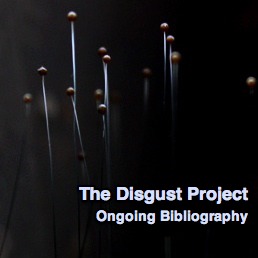The Waves is one of the only Woolf novels for which I feel more detached appreciation than visceral enjoyment. This experiment in abstract character study, tracing the inner lives of six friends from childhood to death through the use of extended inner monologues intercut with third-person descriptions of the sun rising and setting over an ocean vista, is certainly fascinating, but it doesn't set my heart soaring like Mrs. Dalloway, nor does it tickle me like Orlando. It's a dense, quiet read, a sort of book-length expansion of the "Time Passes" section in To the Lighthouse, which implies through its narrative technique that people, along with sun and sea, are part of the continual ebb and flow of the natural world, however much they may tell themselves otherwise.
And whereas my favorite Woolf books often celebrate the transcendent moments of communion between people—difficult, fleeting, imperfect as they often are—it always strikes me that The Waves dwells instead on the ways in which we are all separate, remote. For despite the author's chosen narrative method—long inner soliloquies that begin "'.....,' said Bernard," or "'.....,' said Rhoda"—the characters almost never reply or react to one another. They are "saying" these things in some semi- or sub-conscious level of their beings, a level to which none of their friends have access, and couldn't, perhaps, understand, even if they did. They are "saying" them into the void. A far cry, this, from the ease with which Clarissa and Peter move in and out of each others' thoughts in Mrs. Dalloway. With Bernard (the phrase-making extrovert), Susan (the solitary naturalist), Rhoda (the depressive fantasist), Neville (the intellectual purist), Louis (the snobbish mogul), and Jinny (the sensualist) we have six tracks of thought and sensation moving parallel, seeing at times the same events from different angles, observing the exteriors of the speaker's friends, but almost never coming into actual contact with one of the other trains of thought. Even the extroverted Bernard, who needs the company of other people in order to come fully into his own, is only using others in the service of his own self-realization; he's not actually connecting with the cores of their beings, and his story-telling is an attempt to impose order on the world around him, more than to empathize with others.
I wish then after this somnolence to sparkle, many-faceted under the light of my friends' faces. I have been traversing the sunless territory of non-identity. A strange land. I have heard in my moment of appeasement, in my moment of obliterating satisfaction, the sigh, as it goes in, comes out, of the tide that draws beyond this circle of bright light, this drumming of insensate fury. I have had one moment of enormous peace. This is perhaps happiness. Now I am drawn back by pricking sensations; by curiosity, greed (I am hungry) and the irresistible desire to be myself. I think of people to whom I could say things: Louis; Neville; Susan; Jinny and Rhoda. With them I am many-sided. They retrieve me from darkness. We shall meet tonight, thank Heaven. Thank Heaven, I need not be alone.
It's a lonely vision, I must say. Because despite Bernard's thanks to Heaven that he need not be alone, these characters are profoundly isolated from one another. And although I relate to its "We perished, each alone" ethos to some degree (I believe there are things we must all face alone), I miss the flashes of soul-deep connection that happen in other Woolf novels. Even those characters who crave solitude over company have a certain manic insecurity about their existences. Neville, the serial monogamist, lives in constant fear of abandonment by his lover du jour (openly portrayed as men, by the by). Louis must prove himself better than the Brits who may or may not be sneering at his Australian accent. Rhoda lives in terror and awe of the worlds conjured by her imagination. Only Susan, who finds a soulful connection with the natural world and in the process of childbearing and mothering, seems in any sense at peace to me.
I go then to the cupboard, and take the damp bags of rich sultanas; I lift the heavy flour on to the clean scrubbed kitchen table. I knead; I stretch; I pull, plunging my hands in the warm inwards of the dough. I let the cold water stream fanwise through my fingers. The fire roars; the flies buzz in a circle. All my currants and rices, the silver bags and the blue bags, are locked again in the cupboard. The meat is stood in the oven; the bread rises in a soft dome under the clean towel. I walk in the afternoon down to the river. All the world is breeding. The flies are going from grass to grass. The flowers are thick with pollen. The swans ride the stream in order. The clouds warm now, sun-spotted, sweep over the hills, leaving gold in the water, and gold on the necks of the swans.
This intrigues me, because, from what I know of her biography, Susan and Louis are probably the characters who overlap the least with Woolf's own experience. Susan lives the kind of traditional, pastoral life that her author, who lived amongst bohemians, never had children, and got intensely restless for London whenever her husband attempted to spirit her away to the countryside, did her best to escape. Perhaps, in Susan's contentment, Woolf is romanticizing the path not taken? Perhaps that romanticization is also behind the role of Percival, the bluff, popular, unintelligent Son of Britain who inspires the love of all six friends before sailing off to India in service of the Empire, and dying suddenly when thrown from his horse? Percival (named in the heroic tradition of Perceval/Parzival) is perceived by all four friends as a hero, and inspires disquieting imperialist dreams in them despite their simultaneous contempt for his lack of intelligence:
I see India [...] Over all broods a sense of the uselessness of human exertion. There are strange sour smells. An old man in a ditch continues to chew betel and to contemplate his navel. But now, behold, Percival advances; Percival rides a flea-bitten mare, and wears a sun-helmet. By applying the standards of the West, by using the violent language that is natural to him, the bullock-cart is righted in less than five minutes. The Oriental problem is solved. He rides on; the multitude cluster around him, regarding him as if he were—what indeed he is—a God.
Woolf does sometimes display the casual racism of her time, but I don't think she goes so far as endorsing Bernard in this little white-supremacist fantasy of his. I think she's portraying Percival as the morally questionable glue that holds the friends together, the traditional lunk whose presence lulls those benefiting by the British Empire into comfort and security. The characters make him into a conquering hero in their minds, but after his pointless death (as after the First World War, caused in part by imperialist in-fighting, destroyed Woolf's generation's confidence in pre-War institutions), they are cast adrift on their own reconnaissance. As Neville says, "without Percival there is no solidity. We are silhouettes, hollow phantoms moving mistily without a background."
Which goes a long way toward describing The Waves in general. Beautifully realized, eloquent as Woolf's prose is, it illuminates the psychology of an unmoored and anxious time, in which one set of standards had been proved false, and another set had yet to be found. And a time in which, nevertheless, people continued living much as before - either because they clung to the old dreams (Susan fantasizes about her own sons going to India) or because, as the pounding waves would seem to indicate, human ways of life are dictated by natural rhythms, leaving very little to individual choice. It's not that I necessarily disagree with this observation (although I don't go as far as Woolf with it), but that, unmitigated by moments of genuine human connection, it no longer feels true to my reality. Needless to say, were I recovering from a brutal World War only to witness the rise of Fascist and Communist totalitarianism across Europe, accompanied by a global economic meltdown, I might feel differently.
********
This is the final installment of Woolf in Winter, hosted by the lovely Claire of kiss a cloud. Be sure to stop by everyone else's posts for more takes on The Waves. And a big thanks to Claire and my other co-hosts Sarah and Frances, as well as to everyone who read along with us! It's been very special to me to share a reading of Woolf with such a large and varied group of people.

